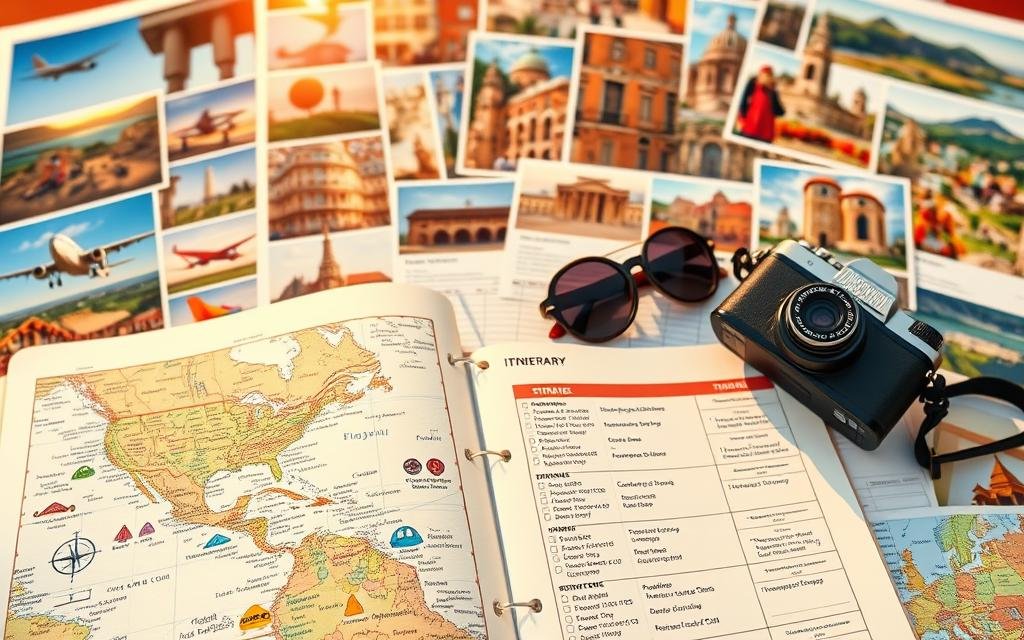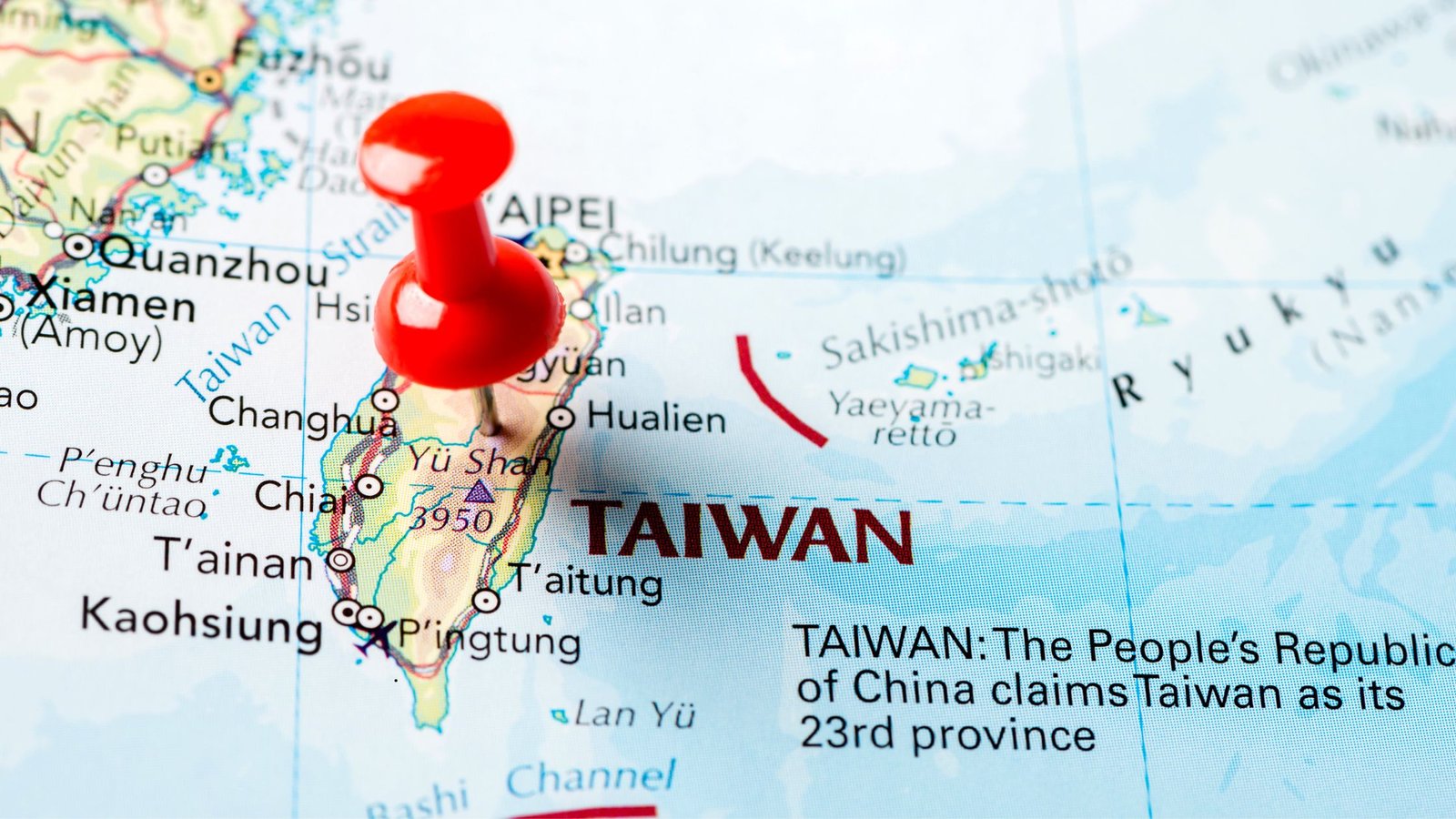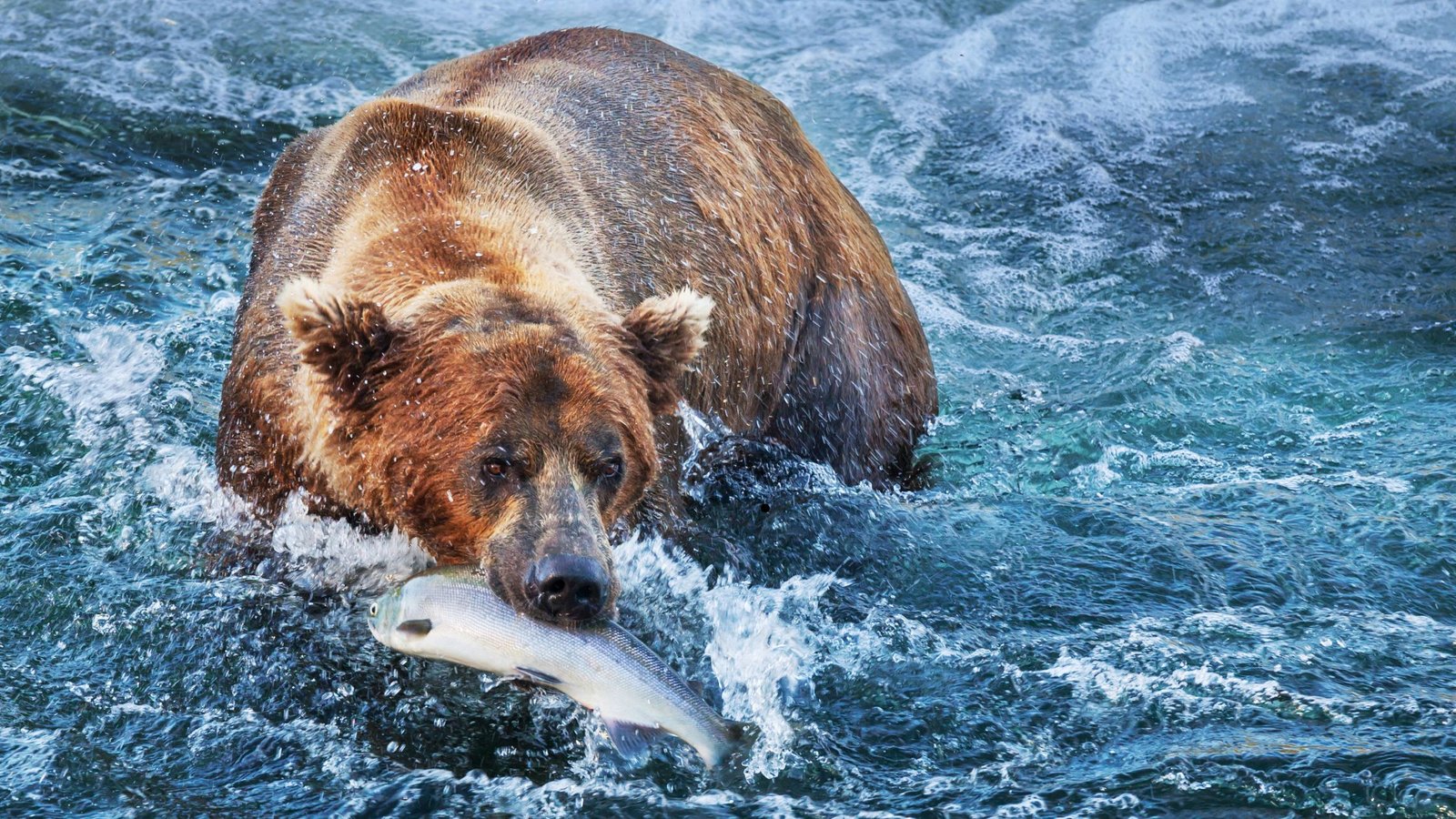Ever wondered what makes a vacation unforgettable? I’ve been on many trips, and I know the secret. It’s all about good tour planning tips. Using the right vacation planning strategies and a detailed checklist can turn a dream trip into reality.
In this section, I’ll share tips that have helped me. They make my travels enriching and memorable.
Key Takeaways
- Identify your travel goals to shape your itinerary.
- Use a trip planning checklist to streamline your preparations.
- Budget wisely to ensure a stress-free vacation.
- Be flexible in your itinerary for unexpected adventures.
- Research accommodations and transportation options thoroughly.
- Engage with local communities to enrich your travel experience.
- Document your journey for future reflections and inspiration.
Understanding Your Travel Goals
Setting clear travel goals is key to a fulfilling vacation. Knowing why I’m traveling makes my trip more enjoyable. It helps me decide what to do and see, shaping my adventures.
Defining Your Purpose for the Trip
Reflecting on my travel goals helps me understand the trip’s purpose. Each journey has its own reasons, like visiting family or exploring new cultures. By setting goals early, I can plan better, from activities to where I stay.
Identifying Key Experiences
It’s important to find experiences that truly matter to me. This might be attending festivals, trying new foods, or discovering hidden spots. These moments help me connect deeply with the place, making my trip unforgettable.
Researching Your Destination
Doing thorough research on your destination can really make your trip better. Start by using online travel resources. They offer lots of information. Blogs and forums give insights into what to see and do.
Traditional travel guides also have great tips. They help plan your trip and make it more enjoyable.
Utilizing Online Resources
Online travel resources are key for research. Sites like TripAdvisor and Lonely Planet have reviews and tips from other travelers. Social media, like Instagram and Facebook groups, offer visual ideas and advice.
They let you connect with others and find special places.
Consulting Travel Guides
Travel guides, from Fodor’s and Rick Steves, give detailed insights. They include maps, history, and must-see spots. These guides help me plan better by adding to my online research.
Engaging with Local Communities
Connecting with locals through Meetup or Facebook groups makes trips richer. They share hidden spots that guides might miss. Locals know the best places to eat and see, away from tourists.
Budgeting for Your Trip
Budgeting is key to a stress-free travel experience. With good travel budget tips, I plan my finances for every part of the trip. This includes flights, food, and activities. A solid budget helps with both expected and unexpected costs.
Setting a Realistic Budget
I begin by listing all possible expenses. This includes airfare, where I stay, meals, and activities. I use online tools and travel blogs to set a realistic budget. Keeping track of my spending helps me avoid overspending.
Finding Cost-saving Opportunities
Looking for ways to save money is important. I explore options like:
- Using public transport instead of taxis
- Choosing budget-friendly places to stay
- Eating at local spots instead of tourist areas
- Enjoying free or low-cost activities
Adding a 10-20% safety cushion to my budget helps with surprises. Good financial planning lets me enjoy my trip without breaking the bank.
| Expense Category | Estimated Cost | Real Cost |
|---|---|---|
| Airfare | $300 | $320 |
| Accommodation | $500 | $480 |
| Meals | $200 | $180 |
| Activities | $150 | $160 |
| Transportation | $100 | $90 |
| Emergency Fund | $100 | $100 |
Creating a Travel Itinerary
A well-structured travel itinerary is key for a smooth trip. It turns a mess of plans into a smooth journey. I start by collecting my travel ideas, making sure I enjoy every moment. I focus on places that match my interests.
Prioritizing Must-see Attractions
I look for a mix of famous spots and hidden treasures. Tools help me organize these places into my daily plans. I aim for a mix of history, local food, and beautiful views. This makes my trip memorable.
Here are some attractions I often choose:
| Destination | Type of Attraction | Recommended Duration |
|---|---|---|
| Statue of Liberty, New York | Iconic Landmark | 3 hours |
| Machu Picchu, Peru | Historical Site | 1 day |
| Great Barrier Reef, Australia | Natural Wonder | Half-day |
| Vatican Museums, Italy | Cultural Experience | 2-3 hours |
Allowing for Flexibility
Flexibility is just as important as planning. I make room for surprises, like trying street food or finding a hidden café. Local tips often lead to the best experiences. Being flexible lets me enjoy every second of my trip.
Choosing the Right Time to Travel
When I plan my trip, timing is key. I look into the best times to visit my destination. Knowing when it’s busy or quiet helps me save money and enjoy fewer crowds.
Understanding Peak and Off-peak Seasons
Peak season is when lots of people travel, making places more expensive and crowded. But, off-peak seasons are cheaper and less busy. I prefer these times for a more relaxed trip.
Considering Local Events and Holidays
Adding local events to my trip makes it special. Festivals and parades let me dive into the culture. I check the event calendar to make my trip unforgettable.
Selecting Accommodations
Finding the right place to stay is key for a good trip. I look at different options like hotels, vacation rentals, and hostels. Each has its own perks that fit my travel plans and likes.
Comparing Different Accommodation Types
Accommodations vary by need and budget. Here’s a quick guide to help pick the best:
| Accommodation Type | Pros | Cons |
|---|---|---|
| Hotels |
|
|
| Vacation Rentals |
|
|
| Hostels |
|
|
Reading Reviews and Recommendations
I read hotel reviews and ask friends for tips. Hearing from others helps me know what to expect. I look for positive feedback and useful tips to help me choose.
Transportation Options
Choosing the right transportation can make my trip better. Good planning lets me explore new cities easily. I check out buses, subways, and rideshares to dive into local culture.
Evaluating Local Transport Methods
Local transport varies a lot. I like public transit for its low cost and local feel. Buses and subways let me see sights I’d miss driving.
Rideshares like Uber or Lyft are handy for reaching hard-to-get places. They offer flexibility and ease.
Booking Flights and Rental Cars
For flights, I look for deals on sites like Expedia or Kayak. I compare prices to find the best flights with short layovers. For rental cars, I seek out deals from big names like Enterprise or Hertz.
This way, I can travel at my own pace after arriving.
Packing Smartly
Packing efficiently is key for a smooth trip. I make a detailed packing list for the climate and activities of my destination. This helps me pack light and stay organized.
Creating a Packing List
Creating a packing list for my trip saves space and prevents forgotten items. I organize my list into sections like clothing, toiletries, electronics, and documents. Here’s how I do it:
- Clothing: Choose outfits that are versatile and suitable for the weather.
- Toiletries: Use travel-sized products to save space.
- Electronics: Bring chargers and necessary accessories.
- Documents: Remember to pack visas, tickets, and itineraries.
Essentials for Different Destinations
Trips to different places need different essentials. For beach trips, I pack swimwear, sunscreen, and light clothes. In cold places, I bring thermal wear and waterproof jackets.
For city trips, I pack comfy shoes and a small bag for day trips. Knowing what to pack for each place makes packing easier and improves my travel experience.
Staying Connected While Traveling
It’s important to stay connected while traveling. This makes it easy to navigate and keeps you in touch with loved ones. When picking mobile plans or Wi-Fi, I look for both affordability and reliability. The right choice lets me stay reachable and share my adventures quickly.
Choosing Mobile Plans or Wi-Fi Options
Before a trip, I check out mobile plans for international travelers. I can buy a local SIM card or use my carrier’s international plan. Some options include:
- Local SIM cards with prepaid data.
- International plans from big carriers like AT&T or Verizon.
- Portable Wi-Fi routers for connecting multiple devices.
The choice depends on my travel style and destinations. Some prefer local SIM cards for cost, while others like international plans for ease.
Keeping Communication Open
Staying in touch while traveling keeps me at ease. Regular updates with family and friends are important. I use messaging apps, social media, or texts to stay connected. Here’s what I focus on:
| Communication Method | Pros | Cons |
|---|---|---|
| Mobile Data | Convenient, reliable | Can be costly |
| Wi-Fi | Often free, no extra cost | Not always available |
| Public Networks | Easy access | Security risks |
No matter the method, keeping connected is a top priority. I aim to share my travel experiences while knowing my family is updated.
Safety and Health Precautions
Keeping myself safe and healthy while traveling is key. I make sure to know the local health rules to stay safe. I check if I need any vaccinations or if there are health risks where I’m going. This careful planning helps me avoid health problems.
Researching Local Health Guidelines
I look into the health rules of the places I’ll visit before I go. I find out about needed vaccinations, common diseases, and where to get medical help. I also check the latest health advice from trusted sources. This way, I feel more at ease.
Preparing for Emergencies
I want to be ready for unexpected situations. I carry a basic first aid kit with things like band-aids and antiseptic wipes. I also make a list of emergency contacts, like local hospitals and my embassy. Being prepared lets me enjoy my travels without worry.
| Health Precaution | Action Steps | Benefit |
|---|---|---|
| Vaccination | Consult healthcare provider and receive necessary shots | Reduces risk of illness |
| First Aid Kit | Assemble essential items for minor injuries | Immediate care in emergencies |
| Emergency Contacts | Document local hospitals and embassies | Quick access to help |
Engaging in Cultural Activities
Traveling is more than seeing landmarks. It’s about diving into the heart of each place. Cultural activities let me connect deeply and experience things beyond the surface. By seeking out these experiences, my travels become richer and more meaningful.
Seeking Authentic Experiences
Real travel moments often happen when I stray from the usual paths. Cooking classes or community events with locals give me a peek into their lives. These moments create lasting memories and a deeper understanding of the culture.
Whether it’s sharing a meal with a family or joining a festival, each experience adds depth to my adventures.
Participating in Local Tours
Local tours are my go-to for experiencing new cultures. They let me see unique parts of a region, guided by people who know the area well. These tours focus on the real, often missing the commercialized attractions.
By joining in, I get to see the culture’s rich layers. It fills me with joy and curiosity.
Reflecting on Your Travel Experience
Travel reflection is key to truly understanding our experiences. It lets us appreciate the sights and the emotions we’ve gathered. Keeping a travel journal is a great way to document our adventures.
This practice helps us remember our thoughts and feelings. It gives us a moment to reflect on our journey. It’s a way to capture the essence of our travels.
Sharing our experiences with others is also important. We can do this through blogs or social media. It inspires others who are planning their trips.
Our stories can give them valuable tips and insights. By sharing, we not only keep our memories alive but also share our world with others.
Travel journaling and sharing are key parts of traveling. They help us understand the world and connect with others. I recommend these practices to anyone who loves to explore.


